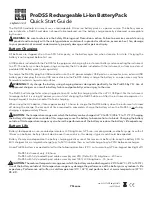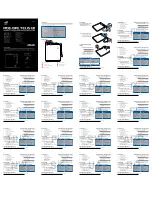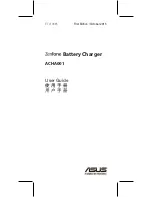
Page
10/55
• Lead-acid batteries are not capable of being charged at high currents. Never exceed the maximum
charge rate stated by the battery manufacturer.
• Protect batteries from vibration, and do not subject them to mechanical stress or shock.
• Batteries can generate explosive gas (hydrogen) when on charge and when being discharged, so it is
important to provide good ventilation.
• Do not allow batteries to come into contact with water - explosion hazard.
• Never short-circuit battery contacts - explosion hazard.
• Batteries can explode or burn, if they overheat. We suggest to use a LiPo-security hard case
Order-No. 8372 with all Li-battery types and with NiCd und NiMH-batteries for charging.
• Do not open battery cells - corrosion hazard.
• It is best to „balance“, or even up the cells in Ni-Cd and Ni-MH battery packs by first discharging all
the cells separately to 0.9...1.1V and then charging up the pack.
•
Please don’t be surprised if your batteries are not as willing to accept charge in winter as in summer.
The ability of a cold cell to accept and store charge is much lower than that of a warm one.
• Battery disposal: exhausted batteries are not ordinary household waste, and you must not dispose of
them in the domestic rubbish. The retail outlet where you purchase your batteries should have a
battery recycling container for proper disposal. Trade outlets are obliged by law to accept exhausted
batteries for disposal.
DELTA PEAK CHARGE TERMINATION for NiCd-/NiMH- Batteries:
CC-CV CHARGING METHOD FOR LiPo/LiIo/LiFe- Batteries
These programs are
only
suitable for charging and discharging LiFePO4 batteries with a voltage of
3.3 V / Cell, Lithium-Ion batteries with a voltage of 3.6 V / cell, and Lithium-Polymer and Lithium-
Manganese batteries with a voltage of 3.7 V / cell. The outstanding feature of Lithium batteries is their
much higher capacity compared to other battery types. However, this important advantage is offset by
the need to adopt different handling strategies: they must be charged and discharged using specific
methods, otherwise they will be damaged, and can be dangerous. The directions in these instructions
must be observed at all times when handling these batteries. Specific information and safety notes will
also be found in the battery manufacturer’s technical information.
The automatic charge termination circuit (battery full detection)
works on the proven Delta Peak principle (also known as the
Delta-V process), which is already in use in millions of chargers.
The PEAK SENSITIVITY is shown as – delta V in the graph.
Charging Time
V
o
l
t
a
g
e
Содержание 6478
Страница 13: ...Page 13 55 ...











































